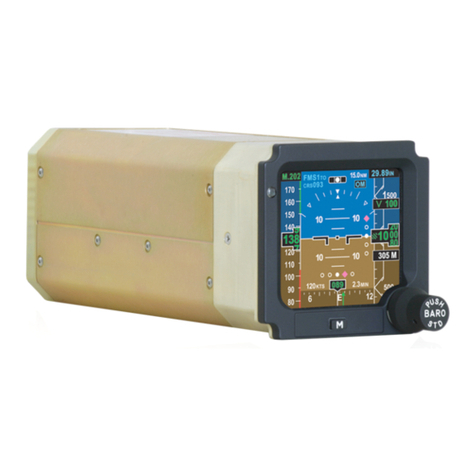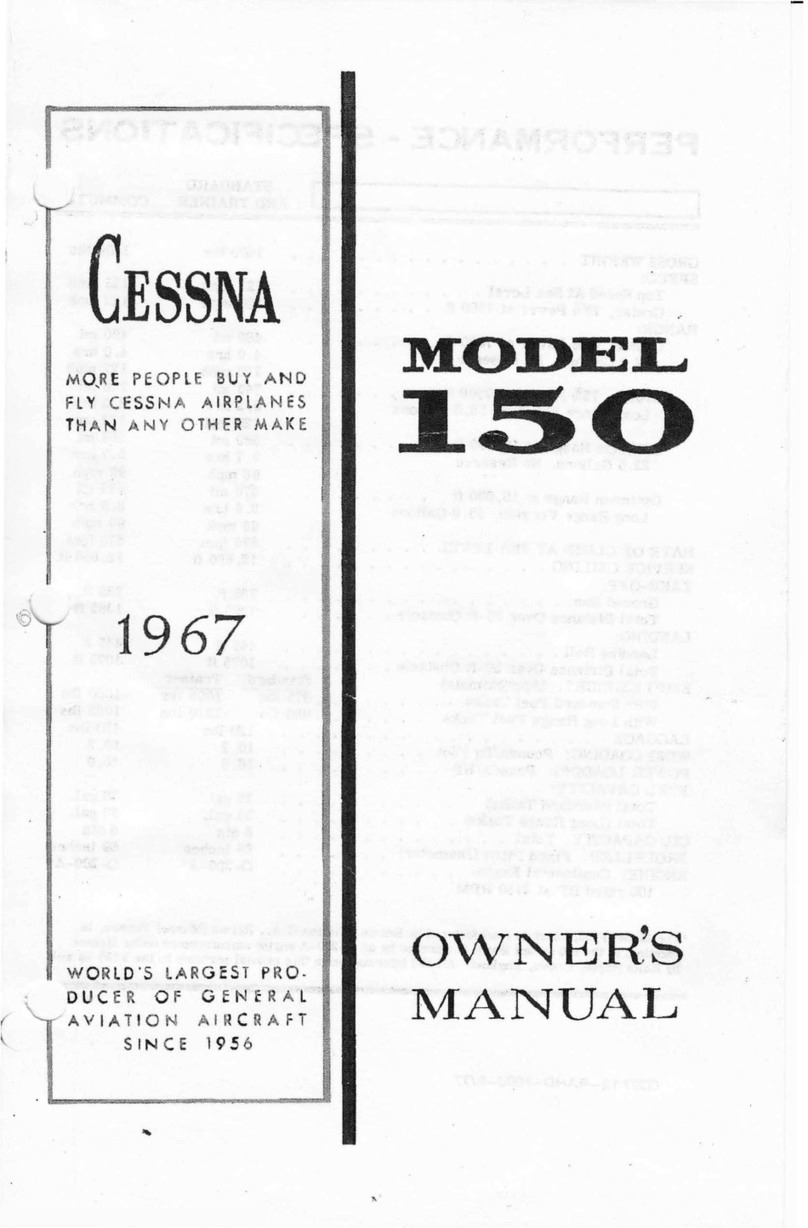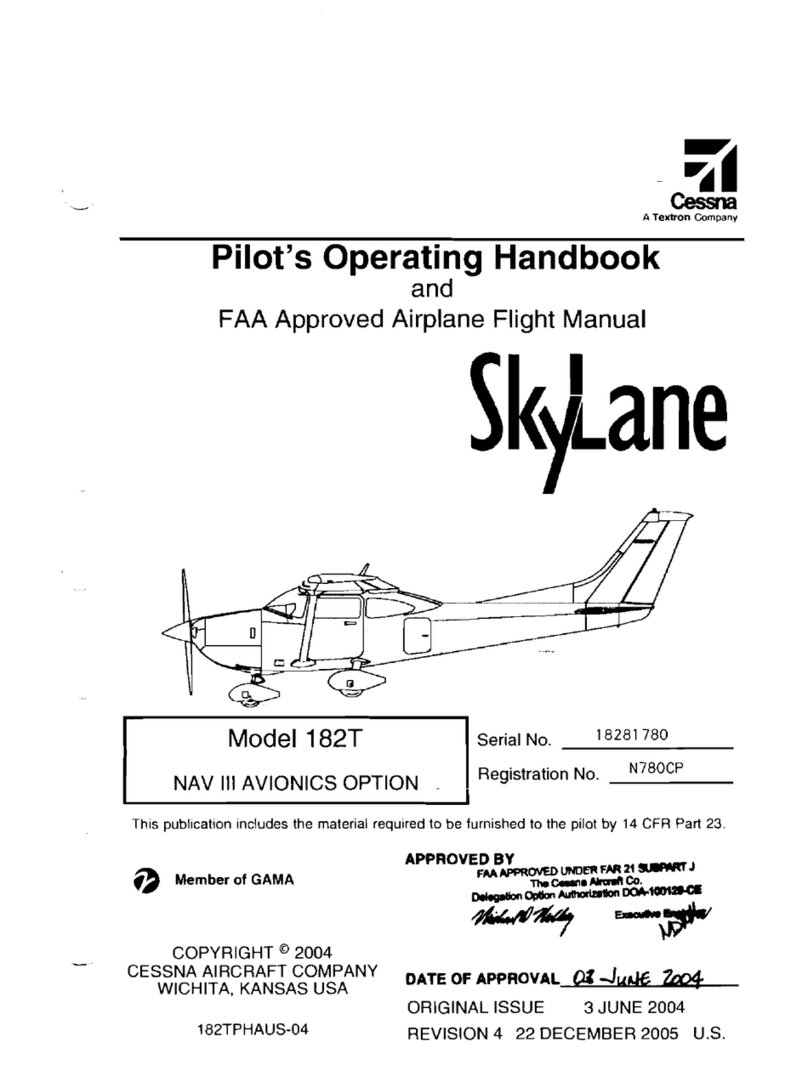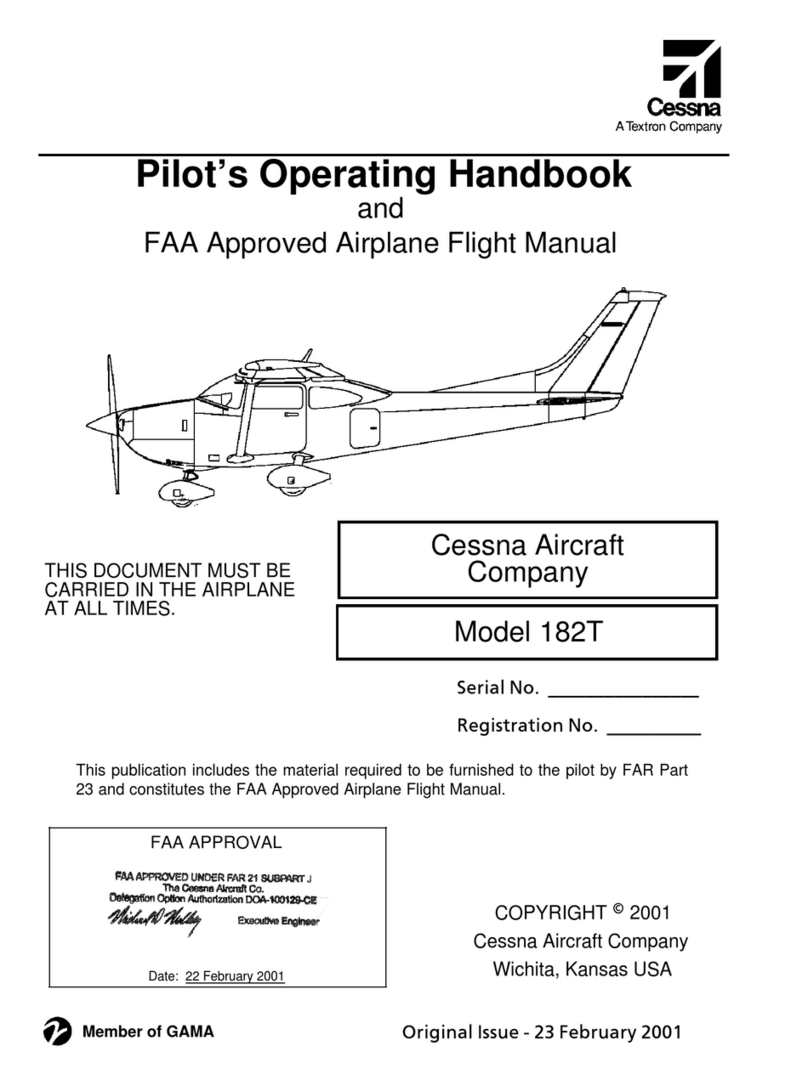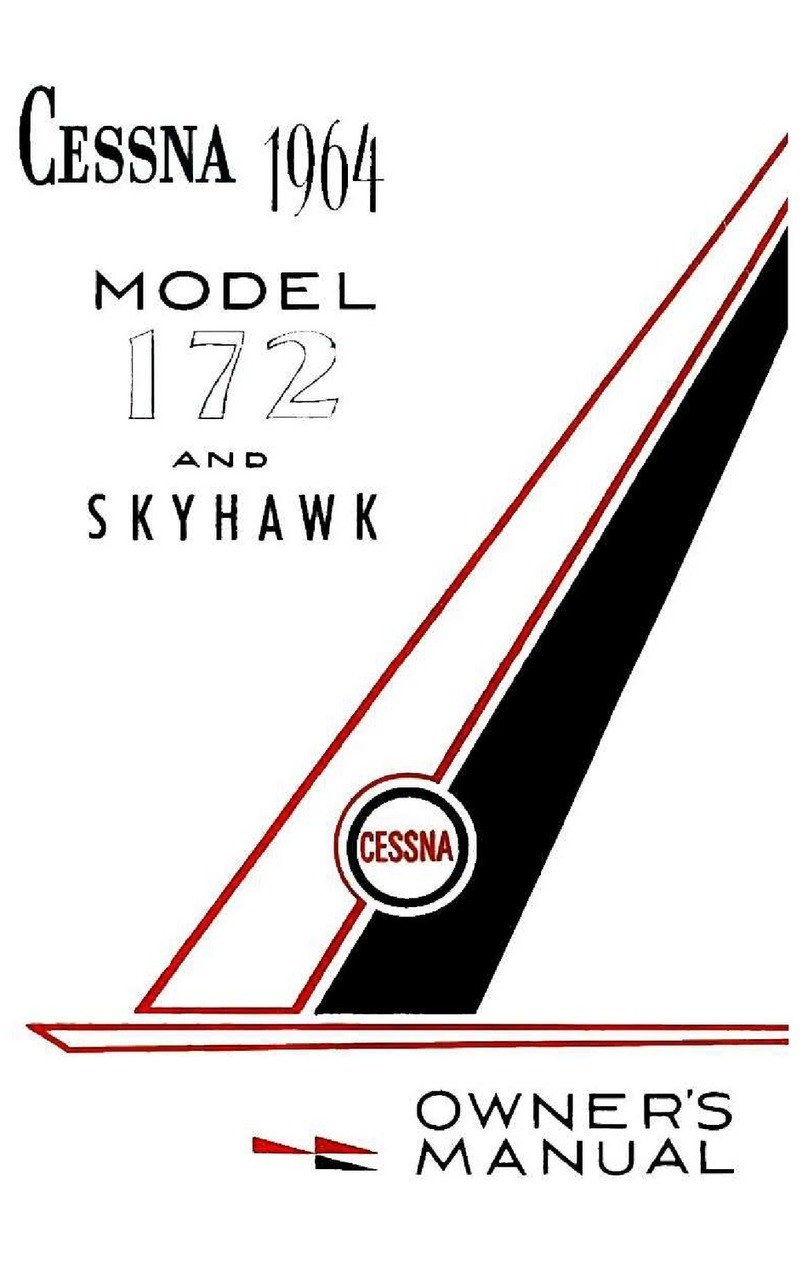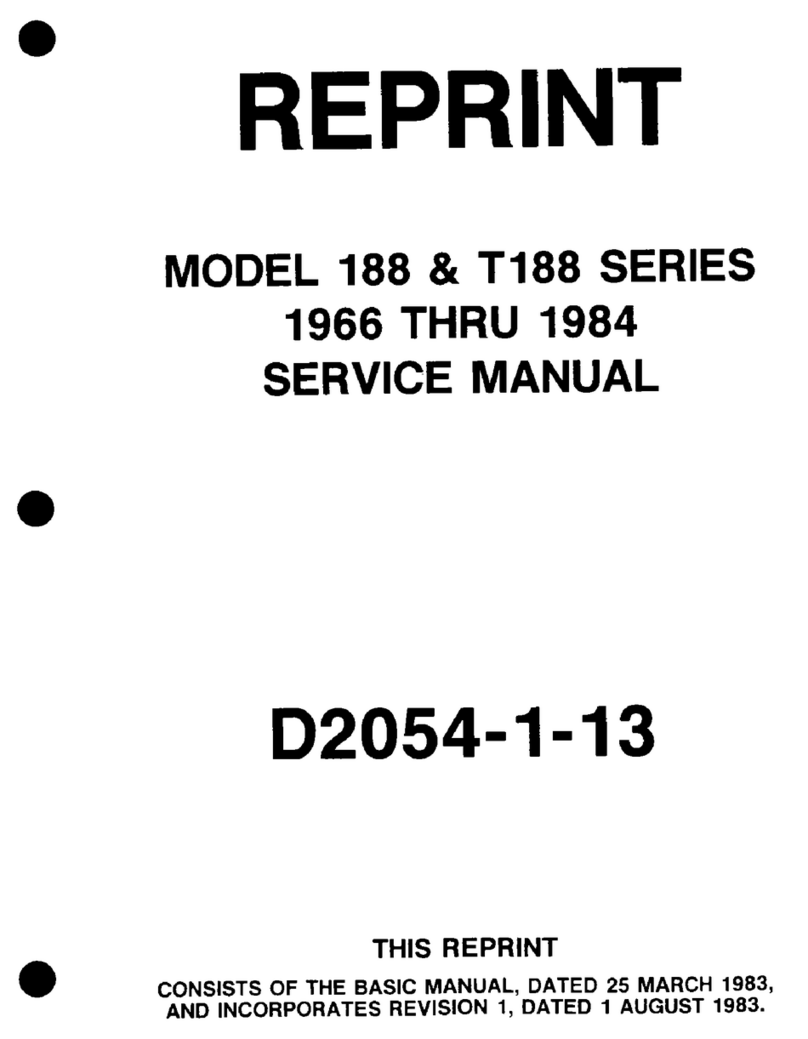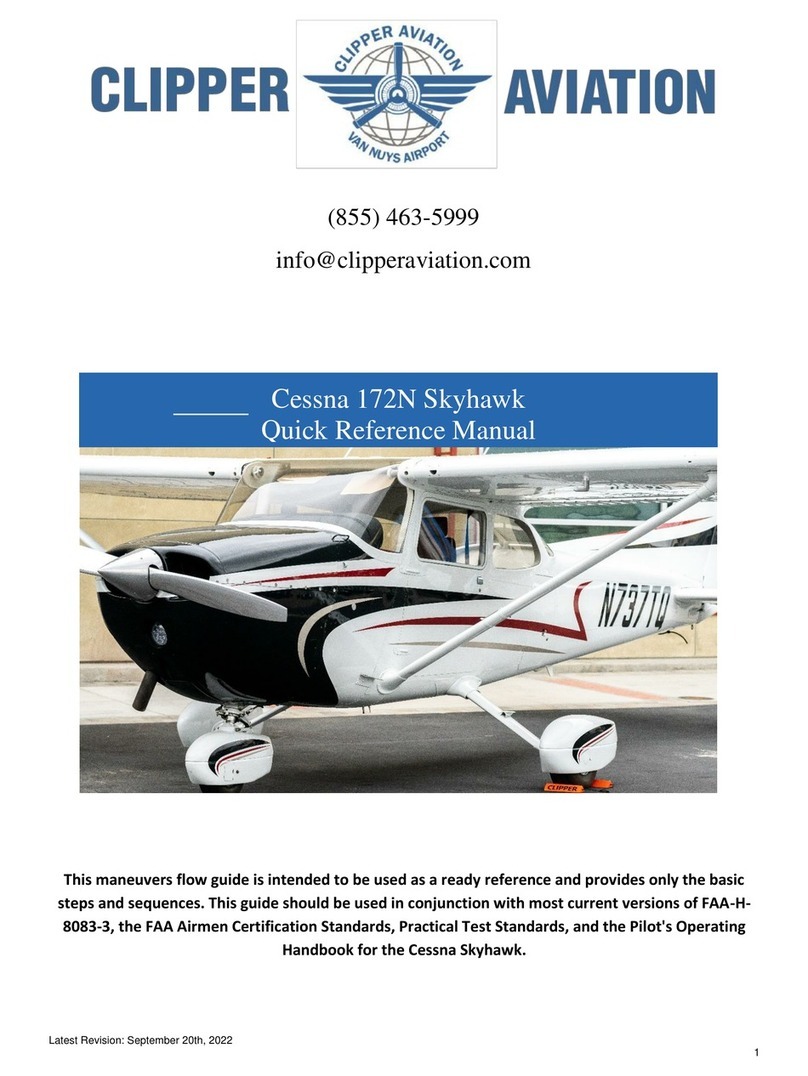
SECTION
1
GENERAL DESCRTPTION
TABLE OF CONTENTS Page
GENERAL DESCRIPTION
..........
1-1
Model 172-Series.
...........
1-1
Description
.............
1-1
1-1.
GENERAL DESCRIPTION.
1-2. MODEL 172-SERIES.
1-
13. DESCRIPTION. Cessna Model 172 Series
aircraft, described in
this
manual, are high-wing
monoplanes of all-metal, semimonocoque construct-
ion. These aircraft are equipped with
a
fixed
tri-
cycle landing gear. Thru 1970 Models, they are
equipped with
flat
spring-steel main landing gear
struts. Eeginning with 1971 Models, these aircraft
are equipped with tubular spring-steel main gear
struts. The steerable nose gear
is
equipped with an
air/hydraulic fluid shock strut. Four-place seating
is
standard, and
a
double-width, fold-up auxiliary
rear seat may be installed
as
optional equipment.
Thru 1971Models, F172-Series aircraft areequip-
ped with six-cylinder air-cooled 0-300-Series, Con-
tinental engines, manufactured under license by
Rolls Royce. Model 172-Series aircraft, andF172-
Series aircraft, beginning with 1972Models, are
powered by four-cylinder, horizontally opposed,
air-
cooled "Blue Streak" (Lycoming) engines.
the engines drives are all-metal, fixed-pitch pro-
Each of
Aircraft Specifications
.........
1-1
Stations
................
1
-
1
Torque Values
.............
1-1
peller. Model 172-Series aircraft feature rear side
windows,
a
"wrap-around" rear window and
a
swept-
back fin and rudder.
1-4. AIRCRAFT SPECIFICATIONS. Leading parti-
culars of these aircraft, with dimensions based on
gross weight, are given in figure
1-1.
If
these di-
mensions areused for constructing
a
hangar
or
com-
puting clearances, remember that such factors
as
nose gear strut inflation, tire pressures, tire sizes
and load distribution may result in some dimensions
that are considerably different from those listed.
1-5. STATIONS, Station diagrams areshown in fig-
ures
1-2
and 1-3 to
assist
in locating equipment when
a
written description
is
inadequate
or
impractical.
1-6. TORQUE VALUES. A chart of recommended
nut torque values
is
shown in figure 1-4. These tor-
que values are recommended for
all
installation pro-
cedures contained in this manual, except where other
values are stipulated. They are not to be used for
checking tightness of installed parts during service.
1-1


